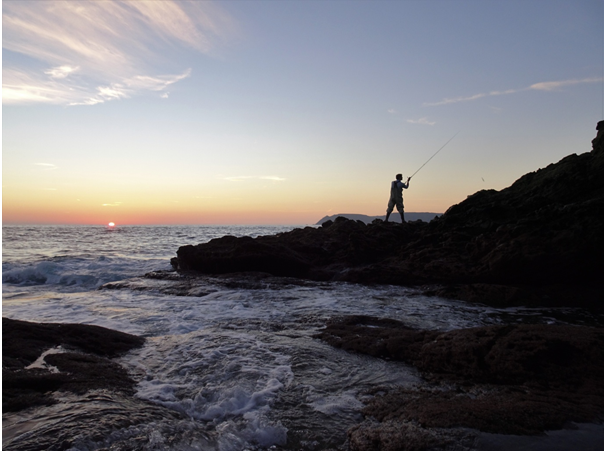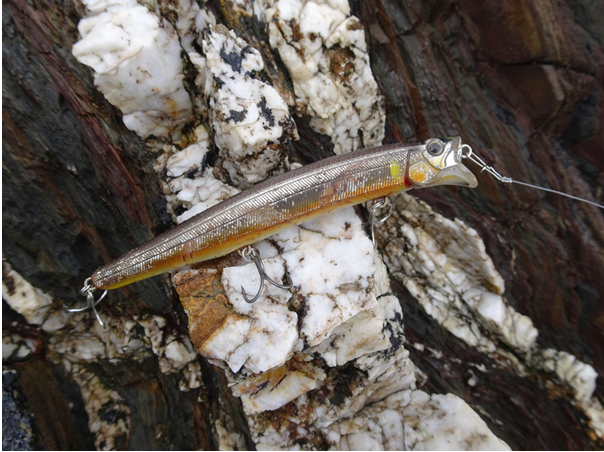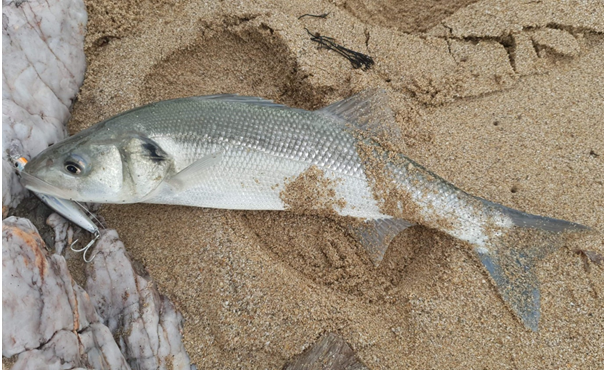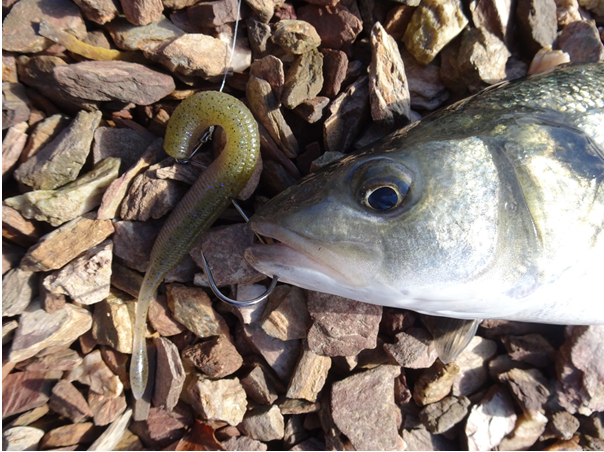Are you a ‘Changer’ or a ‘Mover’...? (Part 1 of 3)
Posted by Marc Cowling (South Devon Bass Guide) on 2nd Nov 2018

Two of the most common questions a client will ask me when I’m guided them are:
1. When should I change bass lures?
2. When should I give up on a mark and move somewhere else?
Both questions are, of course, extremely pertinent and may seem very straight forward, however, the answers are most certainly not - the main reasons being that there are a multitude of factors that come into play. In Parts 1 and 2 I will cover the first question - When should I change the lure?
Take the time
Firstly, there is no hard and fast rule here, but there are most definitely indicators and ways in which you can help yourself that will aid your decision making, that in turn, should assist you in catching more bass and more consistently so. Something that is of paramount importance,and the only way to make an informed ‘lure choice’ decision, is to understand and appreciate what each bass lure type (be it a weedless, weightless soft plastic, shallow diving hard minnow, paddle tail rigged onto a jig-head to small, medium sized surface popper or slider) can do for you. And even more important, is knowing how it reacts when you’re retrieving it - all of which can only be achieved by spending time (over the winter perhaps) out on the shoreline and in real-life sea conditions and circumstances.

Know your lures and what they’re capable of! A very shallow running/swimming hard diving minnow (a Tackle House Feed Shallow 128 in the Ochiayu pattern) is a good choice over rocky/weedy terrain in relatively calm sea conditions. However, it is unsuitable in turbulent seas, as it cannot grip into the water enough to remain stable and therefore ‘swim.’
Virtues
Many of the anglers (clients) that I meet have already conducted some kind of lure fishing prior to our sessions, with many coming from a trout, salmon or fly-fishing background - disciplines where those virtues ‘patience’ and ‘perseverance’ are also essential. Furthermore, entrenched within their overall approach will be the ability to ‘match the hatch’ - putting something in front of a fish that it is looking like and acting like what they are expecting to see. I cannot emphasise enough how crucial this can be when deciding what lure to attach when commencing the session, in addition to making that all important decision to ‘stick’ with what you’re using or to change it.
Example 1
On your way to a mark and once on a mark itself, always keep your eyes peeled! If you notice a number of small, deceased, silvery fish (sprat) very recently washed up the beach by the surf or left stranded by the ebbing tide take immediate advantage of this scenario and cast a small (90-115mm) shimmering shallow diving minnow such as a Daiwa Shoreline Shiner 97F or Apia Ailed’Ore 115F out sharpish!

A recent bass of mine taken in rough conditions, from a sandy beach,on a Daiwa Shoreline Shiner 97F Vertice. Small silvery prey items were stranded in the rock pools on the receding tide which provided a definite clue as to what the bass may have been feeding on.
Example 2
Within the weedy fringes of an estuary you discover a group of small slender fish (sandeel, smelt, mullet or even juvenile bass) sheltering out of the main force of the current and appearing almost stationary. Additionally, every so often there is a boil or splash just beyond the wrack - there are predators in the vicinity and they are highly likely to be bass. Clip on a weedless, weightless soft plastic lure such as a Fish Arrow Flash or OSP Do Live Stick and delicately retrieve it close to the margins.

Did the discovery of similar looking (both in overall appearance and movement) immature fish out of the current, and a change to a lure mimicking such behaviour account for this bass for one of my recent clients - it is highly likely.
Conviction
So what do these examples prove? Have courage in your convictions and if you know there are bass present and you have a very clear idea of what they are feeding on then stick with your original lure choice and persist would be my advice.
Example 3
The venue you are fishing has a good track record of producing bass, and you are fishing in what you know are good conditions based on these previous experiences (a decent swell washing aerated, fizzing water around the rocks) with a variety medium sized 120-130mm diving hard minnows in a variety of colours and with slightly differing actions. The bass could simply be elsewhere, or maybe they are there, but just lying dormant and waiting for the turn of the tide, a change in light levels or perhaps a different type of prey item to haplessly appear before them... This is when I would attach a surface slider or popper such as a Xorus Frosty, Patchinko 125,Patchinko II or Tackle House Feed Popper, Storm Chug Bug or Yo-Zuri Hydro Popper.

A nice bass for me this time a couple of weeks back. Sometimes a splashing, struggling or disoriented looking fish above a bass’ head can prove too much of an easy opportunity to miss - even when other lure types have been trawled through the exact same area continually.
In Part 2 I will delve even further into the types of situations when I would either change the lure I or a client is using, or continue with its use. Ultimately, if you’re using the right lure, in the right way, in the right place at the right time in theory it is only a matter of time before that rod is almost yanked out of your hands!
Marc Cowling is a successful bass lure fishing guide based in South Devon.
Read Part 2.
